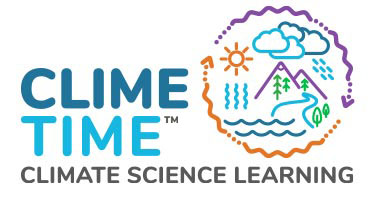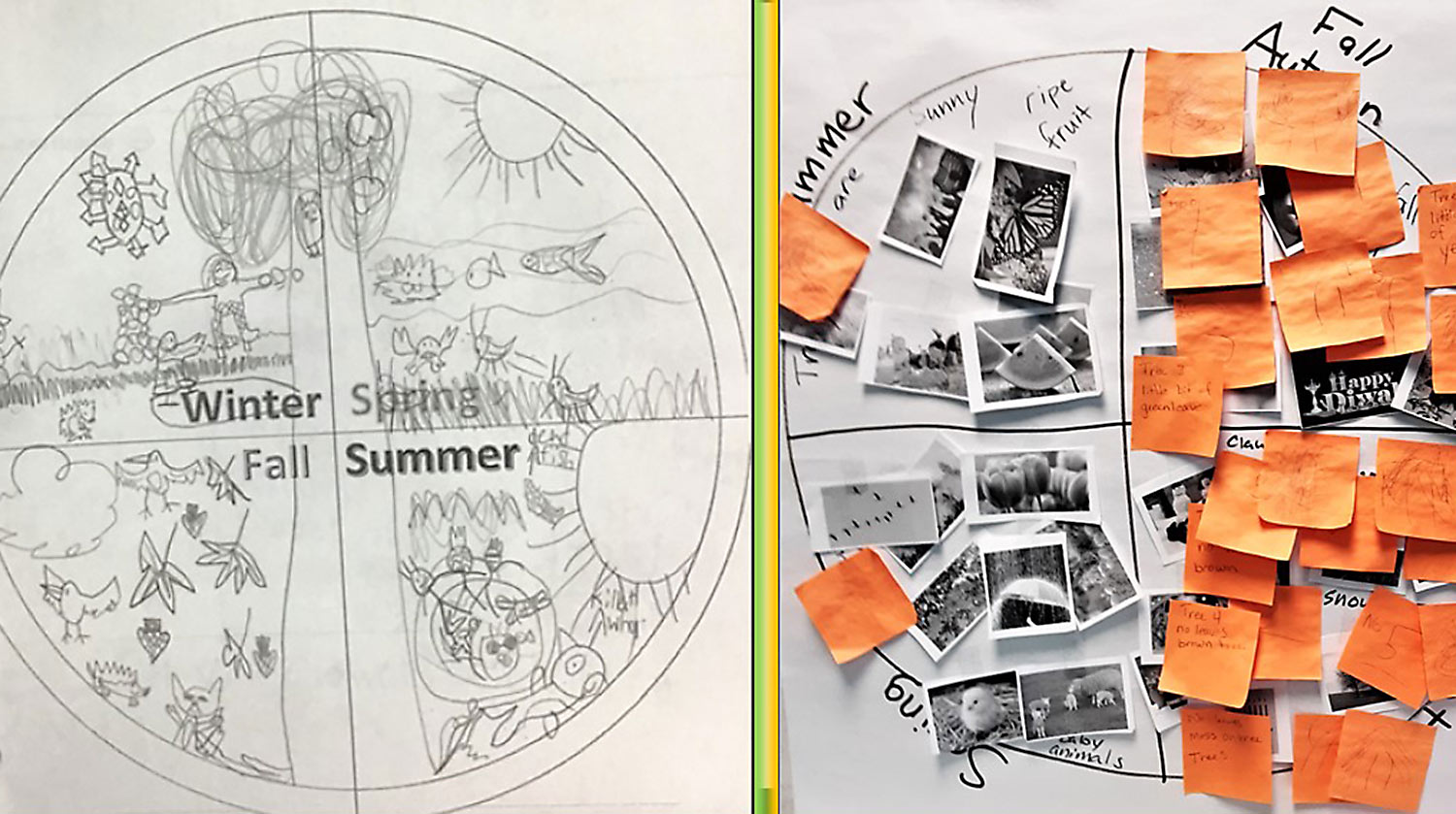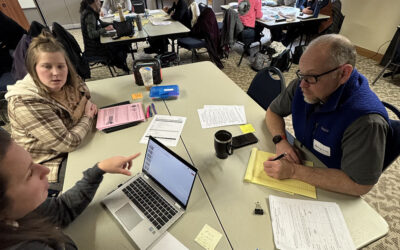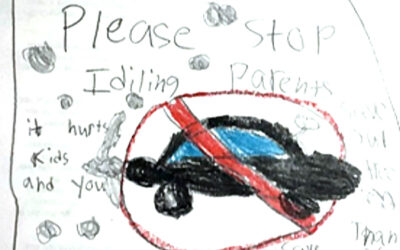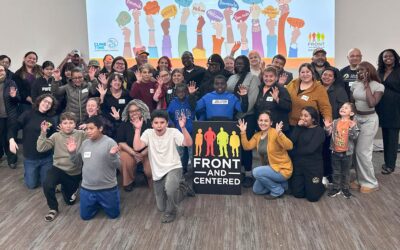PreK-2 Teachers came together in the Fall to explore how plants, animals and people interact with seasonal patterns and consider the impact of climate change.
They learned to incorporate schoolyards and communities into their classroom learning and reflected on how local, relevant, and community-based science instruction is integral to the pursuit of climate and education justice.
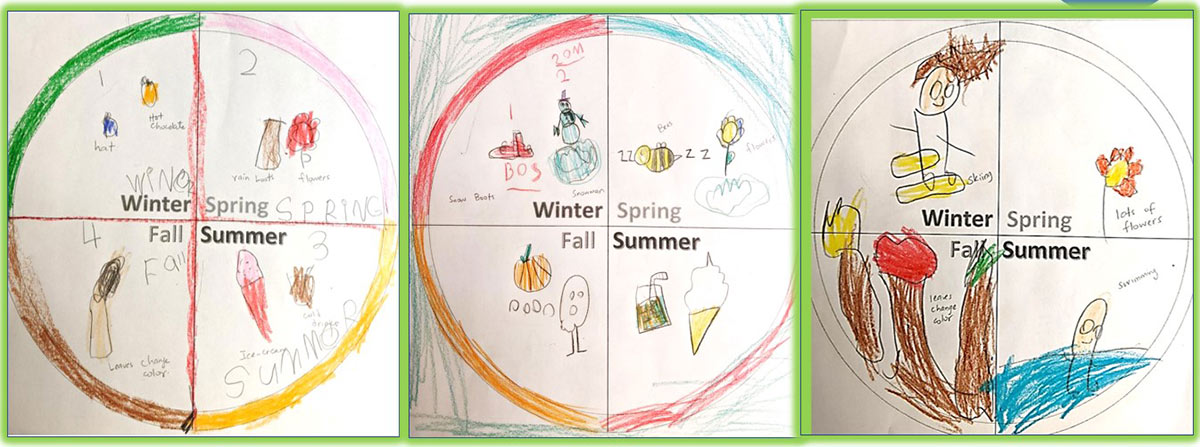
Phenology Wheel Samples by Emerging Writers
Connecting Next Generation Science Standards to personal experiences helped support the centering of justice-centered and equitable science learning; it made learning relevant and helped students see themselves as scientists. Teachers used observable seasonal changes to anchor NGSS-aligned curriculum and get students motivated about doing science in their schoolyard.
Teachers were excited to lead Seasonal Observation Walks with students and reflect on the impact of weather changes on human and nonhuman species in their schoolyard. IslandWood’s Seasonal Change storyline explored how to use and adapt Phenomenal Observations using Claim & Evidence, Explanatory Models, and Leaves & Trees Field Observations. All activities proposed strategies that use local phenomena as the anchoring and driving force for student-centered experiences. Asking questions, making connections, and exploring wonders was at the heart of each classroom implementation process.
The model lessons integrated science standards with ELA read alouds and culturally sustaining activities that engaged students’ families and communities, such as the Family / Trusted Elder Interviews, which elevated family heritage and wisdom in connection with seasonal change in their places of origin. The student-made Phenology Wheels helped them pay closer attention to how animals, plants, and people change with the seasons in their neighborhood.
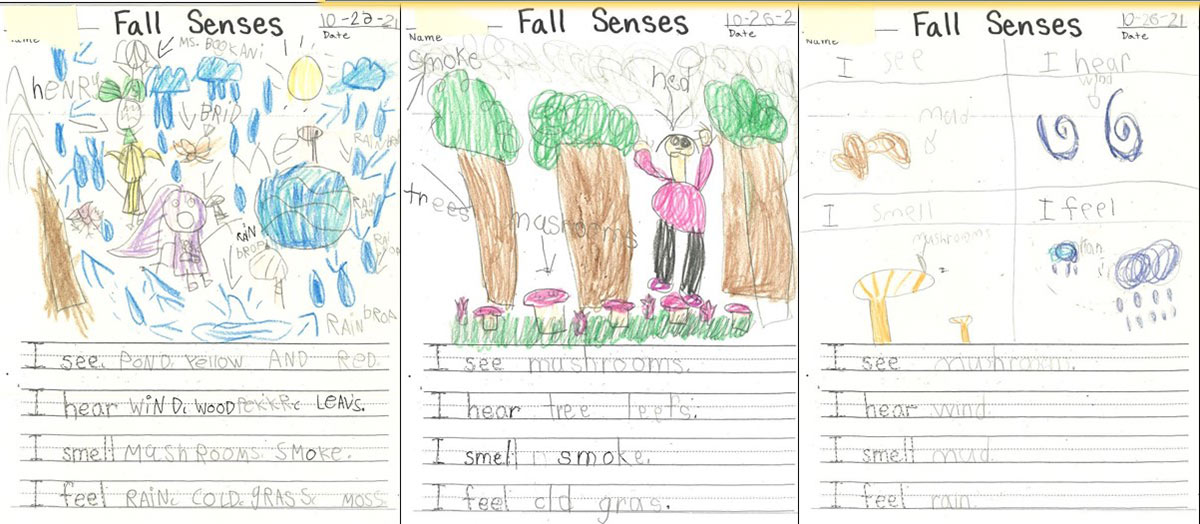
Students conduct Phenomenal Observation and Write about Seasonal Change
The course ended with the teachers reflecting on what actions they could take to help could students and communities take after witnessing seasonal changes in their neighborhoods. A Prek-2nd Grade Course participant describes it best: “Students are showing more awareness of the natural changes that are occurring in weather and plant life around them. They are relating their own clothing choices to seasonal change and are showing a lot of interest in understanding the ‘why’ of things: Why days grow shorter this time of year, why a sunny day in November isn’t hot like a sunny day in August, why deer fur turns gray in the winter, why the seasons are different in other parts of the world at the same time, etc.”
Overall, participation in Phenomenal Observations and Field Investigations documenting weather and species behavior helped students connect and relate to their immediate urban environments in new ways.
To keep an eye out for future IslandWood course offerings, click here.
